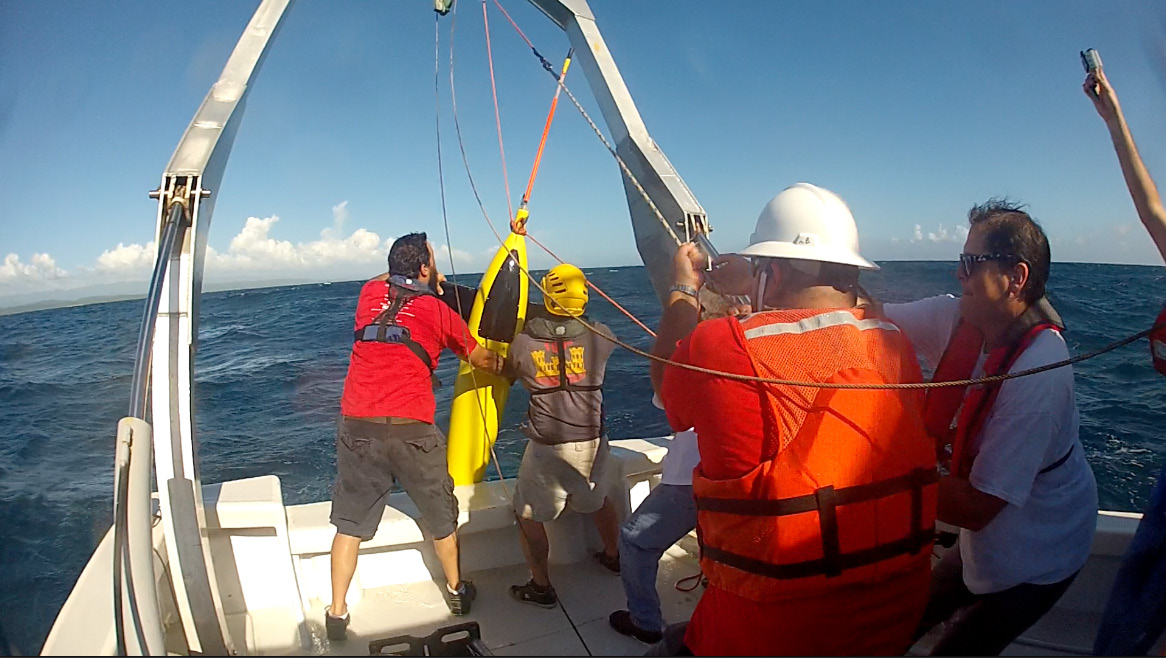Underwater Gliders Successfully Recovered after Four-Month Deployment
On November 18-19th, researchers with AOML’s Physical Oceanography Division (PhOD) successfully recovered their two underwater gliders in the North Atlantic Ocean and Caribbean Sea from the RV La Sultana of the University of Puerto Rico Mayaguez (see map below for recovery locations). These recoveries marked the end of the first underwater glider mission for AOML, which started in mid July 2014.
The recovery involved a field team at sea retrieving the gliders and a pilot team at AOML controlling the gliders and steering them to an area where they could be safely recovered. PhOD-University of Miami Cooperative Institute personnel Grant Rawson and Kyle Seaton participated in their at-sea recovery, while PhOD personnel Francis Bringas and Gustavo Goni provided the piloting support from AOML.

After recovery, the gliders were brought to the University of Puerto Rico Mayaguez in La Parguera where they underwent a thorough refurbishment. Batteries were replaced and each glider was equipped with an oxygen sensor, expanding data collection capabilities for their second mission, which will start in January 2015. This next mission will be geared towards investigating the upper ocean dynamics and density structure in the Caribbean Sea south of Puerto Rico, and the gliders will be expected to carry out observations for four to five months. During their first mission, the gliders collected more than 2800 temperature and salinity profiles in the region. These data were transmitted in real-time to the Global Telecommunication System, to data distributions centers, and also distributed through the AOML web page. Data included ocean temperature and salinity profiles collected during Tropical Storm Bertha and Hurricane Gonzalo, which were incorporated into ocean forecast models and used to initialize operational tropical cyclone intensification models. Temperature and salinity sections obtained during Bertha and Gonzalo are currently being used to assess the impact of the wind field in surface mixing and upper ocean dynamics in the Caribbean Sea.

The two year-long project is supported by NOAA’s Sandy Supplemental funds to collect and distribute ocean data for improved understanding of air-sea interaction during the passage of a tropical cyclone and to assess the impact of upper ocean environmental conditions in tropical cyclone intensity forecasts. Research partners include the University of Miami’s Cooperative Institute for Marine and Atmospheric Studies, NOAA’s Environmental Modeling Center, National Data Buoy Center, and Integrated Ocean Observing System Office, the University of Puerto Rico Mayaguez, CariCOOS (Caribbean Coastal Ocean Observing System), and the Maritime Authority of the Dominican Republic. Data collected by the underwater gliders are available on the PhOD glider home page at www.aoml.noaa.gov/phod/gliders. There you can find their tracks, temperature and salinity plots of individual dives and sections, surface and depth-averaged currents, and plots encompassing their entire mission.
